Joint pathologies are among the most common of all disorders of the musculoskeletal system. Inflammatory and non-inflammatory diseases significantly worsen the quality of human life and in many cases cause disability. One of the most common diseases is osteoarthritis of the knee joint. Symptoms of the pathology are most often acute and require qualified assistance.
Causes of the disease
In medicine, the disease is also called osteoarthritis, gonarthrosis, deforming osteoarthritis (DOA). Osteoarthritis is a generic name for all degenerative-dystrophic diseases of the articular and intervertebral joints. Violation in the area of the knee joint is called gonarthrosis.
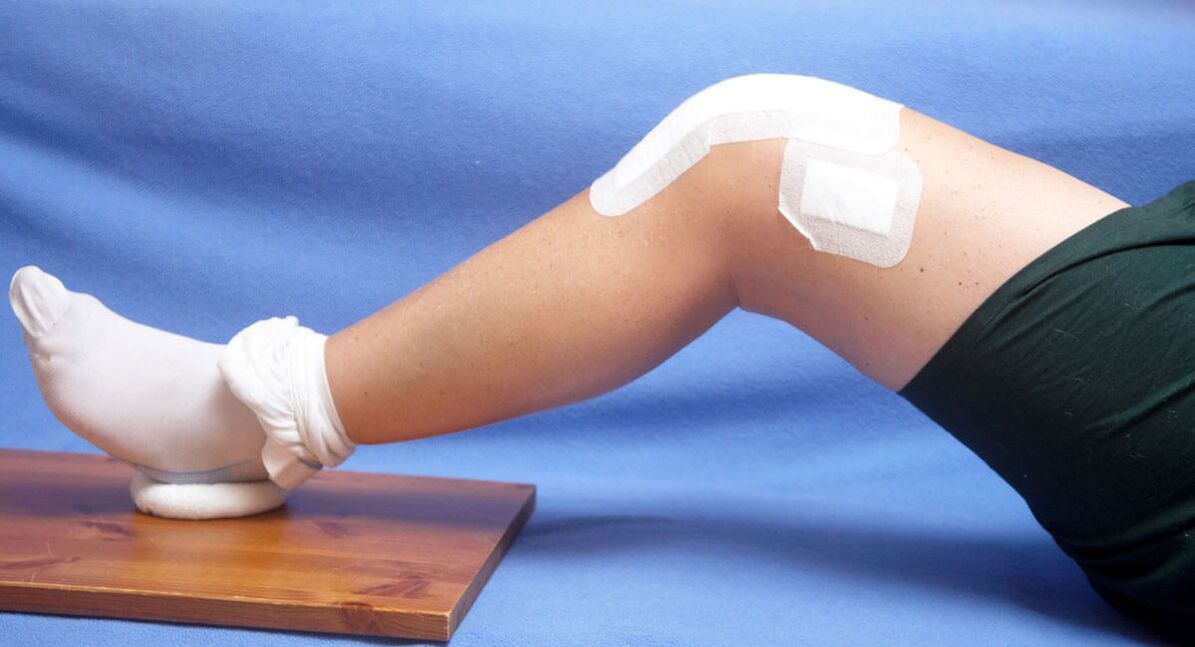
It is characterized by damage to the cartilage in the knee joint.
The pathology consists of degenerative-dystrophic changes in the bone and cartilage tissue, characterized by a gradual thinning of the cartilage in the joint and by the parallel formation of bone growths.
This becomes the body's response to friction and increased pressure. The most likely causes of knee joint gonarthrosis symptoms are as follows:
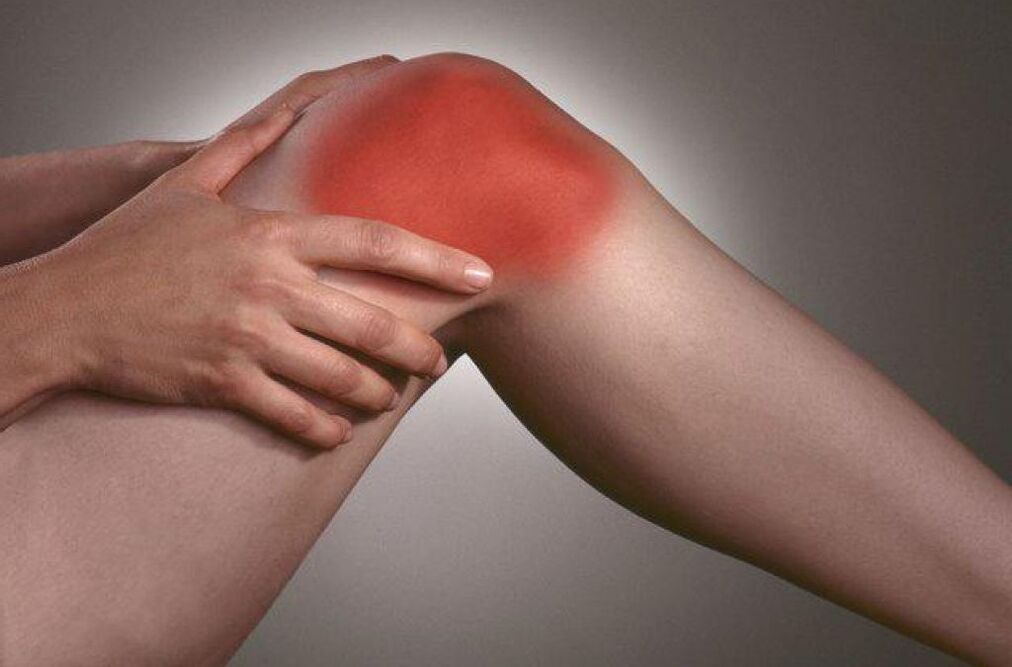
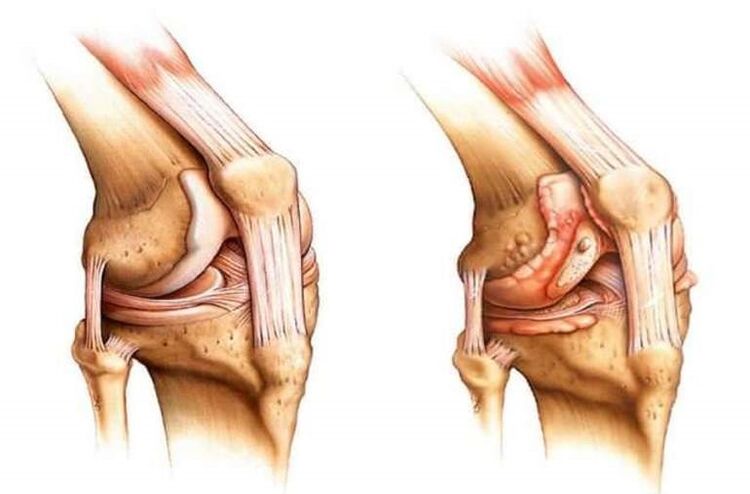
- Traumatic injuries of mild and severe forms with reduced mobility of the joint joint for a long time. Rupture of the ligament or severe bruising often provoke the development of an inflammatory process, which consequently provokes the appearance of symptoms of gonarthrosis.
- Knee joint surgery to eliminate any defect or foreign body.
- Prolonged and excessive physical activity on an ongoing basis. This can be due to professional or specialty sports. Constant tension in the connection area leads to a gradual thinning of the cartilage, which negatively affects the entire musculoskeletal system.
- Acute bursitis with the development of purulent inflammation in the joint cavity. As a rule, it is difficult to get rid of such a pathology conservatively, so doctors resort to minor surgical intervention, which negatively affects the cartilage tissue.
- Arthritis of various forms and severity. In this case, the inflammatory process is pronounced, proceeds with a sharp rise in temperature and leads to the development of arthrosis after a certain period of time.
- Gout also often leads to cartilage pathologies with severe clinical manifestations and joint joint deformities.
- Weakened immunity, which causes a gradual resolution of bone and cartilage tissue due to the body's inability to cope with the pathology.
- Bad habits - alcohol abuse, smoking - quite often become a predisposing factor to the appearance of signs of pathology.
- Severe autoimmune diseases.
- Frequent viral and catarrhal pathologies that provoke an inflammatory process and the development of degenerative-dystrophic changes.
- Excess weight and severe obesity also cause a violation, since each additional kilogram increases the load on the joint joints by 10 times, which will certainly affect the cartilage tissue.
It is worth noting that all these reasons very often provoke a secondary type of violation. There is also a primary one, which differs in that the disease becomes a consequence of the body's natural aging process. Bone and cartilage tissue wears out, increasing friction and stress. The result is gonarthrosis.
Variety of pathology
There are several types of pathological conditions, each of which has its own characteristics. Depending on how the joint is affected, the following types of ailments are distinguished:
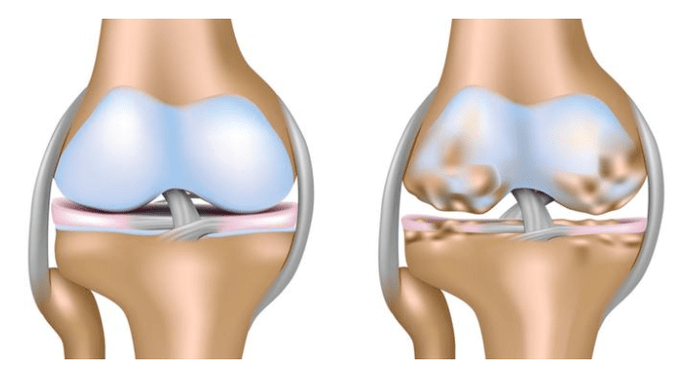
- The right side is characterized by the appearance of cartilage changes on the right side. As a rule, it becomes the initial stage of the disease.
- Signs of gonarthrosis of the left side of the knee joint by the nature of the clinical picture do not differ from the right side. But it is noted that this type often develops in overweight patients.
- Bilateral refers to severe forms, affects the entire cartilage and is characterized by severe pain.
Note that the latter type is most often observed in elderly patients with primary tissue damage. Depending on the course of the pathological process, acute and chronic types are distinguished. The first is characterized by rapid progression and the development of complications, the second proceeds slowly, it may not bother the patient for several years.
Clinical picture
The signs of gonarthrosis of the knee joint and its symptoms largely depend on the degree of damage to the joint. Currently, there are several stages of the pathological process, each of which has its own clinical manifestations:

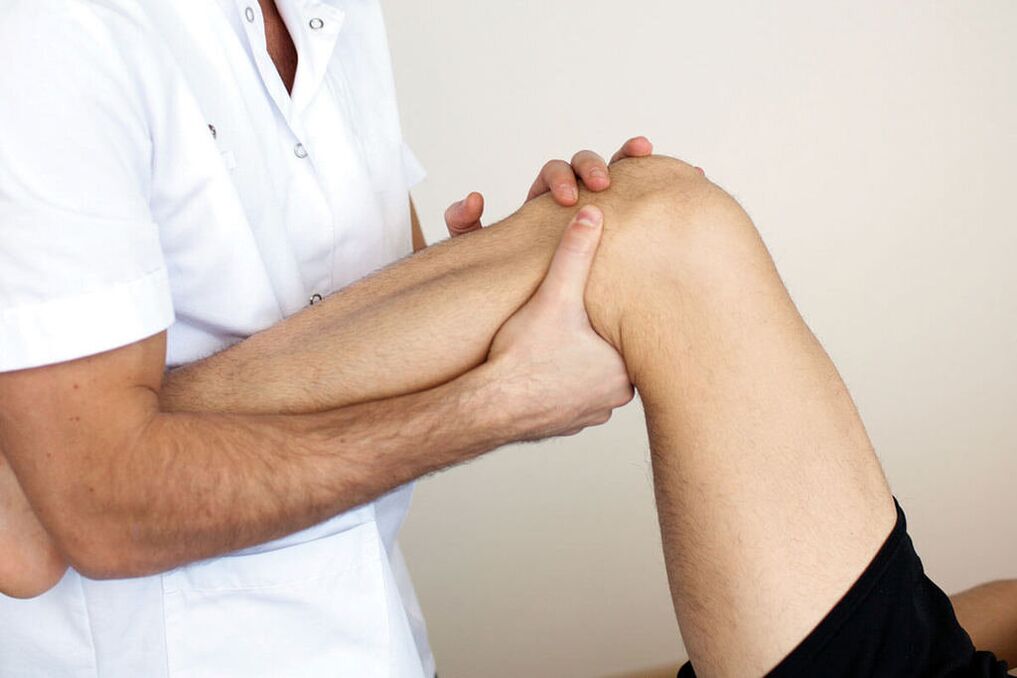
- The initial stage is characterized by the absence of pronounced symptoms and the inability to visually recognize the pathology. The patient gets tired more than usual, but cancels it as overwork or increased workload. He becomes lethargic, sleepy, and performance is markedly reduced. Some patients have mild stiffness in the diseased joint when moving, especially in the morning. However, they often do not pay attention to this and do not turn to a specialist. If an x-ray of the joint is taken at this stage, a narrowing of the joint space may be noted, which causes a violation.
- In the next stage, the discomfort and stiffness do not disappear, but increase. With a light and short load, the patient develops severe pain in the knee, which disappears only after a long rest. In some cases, the joint swells and this swelling disappears at night but reappears during the day. As the pressure on the cartilage tissue increases due to its exhaustion, the patient often hears a characteristic creak during movements. The flexion function is also impaired, as the patient is unable to fully bend the limb. At this stage, patients usually go to a specialist.
- The third stage is the most severe and is characterized by a pronounced pain syndrome that accompanies the patient not only during exercise, but also at rest. In severe cases, the pain does not leave a person even at night, which significantly worsens her condition. Swelling at this stage is constantly observed. In the joint bag, the amount of synovial fluid is dramatically reduced, which increases the load and increases friction in the joint.
- The initial stage is characterized by the absence of pronounced symptoms and the inability to visually recognize the pathology. The patient gets tired more than usual, but cancels it as overwork or increased workload. He becomes lethargic, sleepy and performance is markedly reduced. Some patients have mild stiffness in the diseased joint when moving, especially in the morning. However, they often do not pay attention to this and do not turn to a specialist. If an x-ray of the joint is taken at this stage, a narrowing of the joint space may be noted, which causes a violation.
- In the next stage, the discomfort and stiffness do not disappear, but increase. With a light and short load, the patient develops severe pain in the knee, which disappears only after a long rest. In some cases, the joint swells and this swelling disappears at night but reappears during the day. As the pressure on the cartilage tissue increases due to its exhaustion, the patient often hears a characteristic creak during movements. The flexion function is also impaired, as the patient is unable to fully bend the limb. At this stage, patients usually go to a specialist.
- The third stage is the most severe and is characterized by a pronounced pain syndrome that accompanies the patient not only during exercise, but also at rest. In severe cases, the pain does not leave a person even at night, which significantly worsens her condition. Swelling at this stage is constantly observed. In the joint bag, the amount of synovial fluid is dramatically reduced, which increases the load and increases friction in the joint.
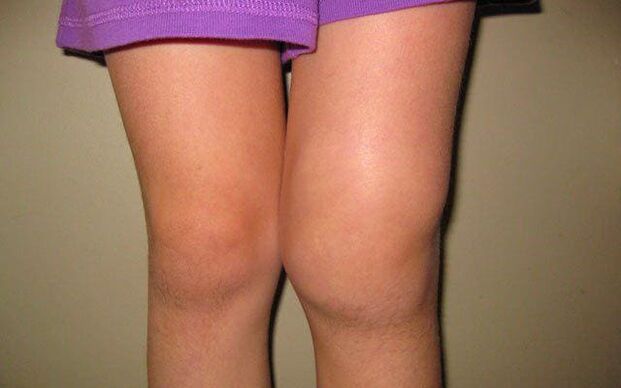
As a rule, the pain disturbs the patient's sleep, becomes irritable and constantly feels fatigued. Appetite weakens or completely disappears, which causes a deterioration in the work of the digestive and cardiovascular systems.
Lack of normal sleep often leads to a nervous breakdown, especially in elderly or young patients who are engaged in intense physical work. Impairment of memory and a decrease in concentration of attention also become the result of insufficient rest of the patient.
Usually, the pathology proceeds without temperature, but in the advanced stages, when the cartilage is completely destroyed, the friction of the bones and the pressure between them increases, provoking the inflammatory process.
The body tries to restore balance and reduce the load on the connection. It is for this reason that osteophytes or bony growths develop in the joint. They become the cause of deformation in the advanced stages of the pathological process.
The most dangerous complication of such violations will be complete immobilization of the patient and disability. As a rule, this happens in the absence of adequate treatment or ignoring the symptoms of osteoarthritis of the knee for a long time.
Diagnostic methods
To accurately diagnose, the doctor suggests the patient to undergo a comprehensive examination. This is necessary not only for identifying the cause, but also for the correct selection of drugs necessary for therapy. The first step will be to interview the patient and identify probable causes. Lifestyle, professional activities and habits play a special role. The next step will be to examine the diseased limb and determine the degree of damage.
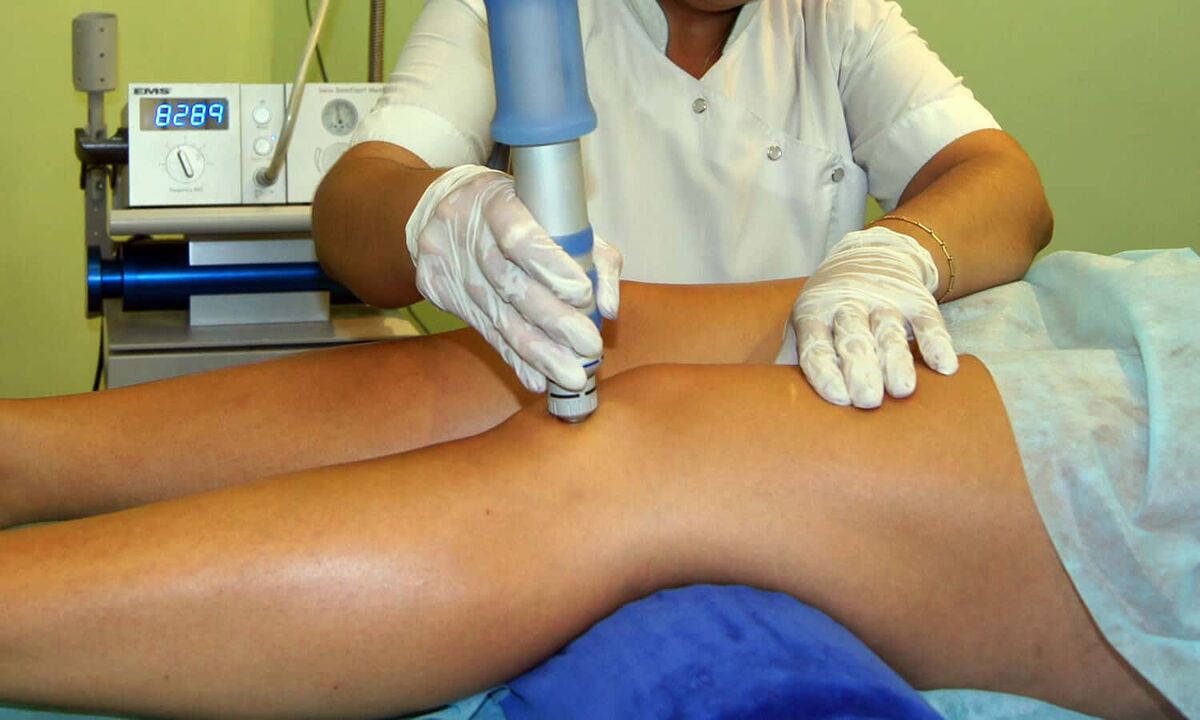
If there are no visible signs of pathology, the disease is at an early stage. The next step will be to collect a medical history and identify chronic diseases that could become a predisposing factor. Subsequently, the patient donates blood for laboratory tests. The detection of traces of inflammation in it in the form of an increase in the level of leukocytes suggests that some process caused the development of the ailment.
An obligatory moment in the diagnosis will be an X-ray examination to accurately determine the degree of gonarthrosis. The picture usually shows areas of complete cartilage destruction, as well as the number of osteophytes and their location. This helps clarify the presumed diagnosis and prescribe the appropriate treatment.
Sometimes it is impossible to see the exact picture and degree of joint damage on an x-ray. In this case, it is recommended to undergo an ultrasound examination of the joint.
In extreme cases, the patient is prescribed a CT scan. This is usually enough to get a complete picture of the disease.
Medical therapy
Conservative treatment of the pathological condition is possible only at the 1st and 2nd stages, when the formation of osteophytes has not yet begun. The therapy is mainly aimed at slowing down the destruction of cartilage and its restoration. The classic scheme involves the use of the following drugs:
- Means from the group of painkillers that help relieve pain. Allow the patient to feel better, improve night sleep. In a hospital, injections are effective, which are carried out 1 to 3 times a day under the supervision of a specialist. It is not recommended to use the funds for a long time, as they do not affect the course of the pathological process, but only relieve acute pain.
- Non-steroidal anti-inflammatories. The funds are available in tablets and in injectable form, they can not only eliminate acute pain, but also slow down the progression of the pathology, relieve local fever and swelling, and improve motor function. With regular intake for 7-10 days, a constant concentration of the active components of the drug in the patient's blood is observed, which ensures a prolonged action. It is not recommended to take medications for a long time, as they often negatively affect the digestive system. For this reason, they should not be taken by patients with severe peptic ulcers or other disorders.
- Chondroprotectors help restore cartilage in the affected joint and increase the amount of synovial fluid. As a rule, such drugs contain glucosamine and chondroitin. It is recommended to take them for a long time. Typically, an 8-12 week cycle is prescribed with regular visits to a specialist to detect improvement. Longer reception is possible with clear indications.
- Glucocorticoids. They are used to treat advanced cases when the pain syndrome is not eliminated by conventional means. Helps relieve swelling and reduce pain. It is allowed to use only in the hospital in the form of intramuscular or intravenous injections.
- Non-steroidal anti-inflammatories. The funds are available in tablets and in injectable form, they can not only eliminate acute pain, but also slow down the progression of the pathology, relieve local fever and swelling, and improve motor function. With regular intake for 7-10 days, a constant concentration of the active components of the drug in the patient's blood is observed, which ensures a prolonged action. It is not recommended to take medications for a long time, as they often negatively affect the digestive system. For this reason, they should not be taken by patients with severe peptic ulcers or other disorders.
- Chondroprotectors help restore cartilage in the affected joint and increase the amount of synovial fluid. As a rule, such drugs contain glucosamine and chondroitin. It is recommended to take them for a long time. Typically, an 8-12 week cycle is prescribed with regular visits to a specialist to detect improvement. Longer reception is possible with clear indications.
- Glucocorticoids. They are used to treat advanced cases when the pain syndrome is not eliminated by conventional means. Helps relieve swelling and reduce pain. It is allowed to use only in the hospital in the form of intramuscular or intravenous injections.
In addition to such funds, the patient is prescribed a course using an external agent in the form of an ointment, cream or gel. The latter option is preferable because it quickly penetrates the joint cavity and has a therapeutic effect. They can be used within 14 days. It is not recommended to extend the course on its own, as the risk of complications increases.
In severe cases, the patient is injected directly into the joint cavity. You can drive conventional analgesics, but the best therapeutic effect is achieved with the introduction of hyaluronic acid preparations. Injections are carried out 1 time in 7 days. For complete elimination of pain, 3-5 injections are sufficient. After such therapy, the effect persists for 6 months. The patient has the ability to move normally, and the pain syndrome almost completely disappears.
If none of the methods brings the expected result, and the patient's condition worsens, surgery is performed to replace the joint with a prosthesis. Replace the entire joint or its individual parts. This is usually indicated for osteoarthritis, caused by a severe knee injury. The operation is performed under general anesthesia and the recovery period is quite long and difficult.
Gonarthrosis is a serious degenerative-dystrophic pathology, which, if not adequately treated, leads to the patient's disability. It is advisable to immediately consult a doctor when the first signs of violation appear.















































